admin
Staff member

Last month I canceled a trip to Las Vegas to attend the 2022 AimExpo motorcycle show, due to travel advisories and the rising wave of the COVID-19 Omicron variant. It was crushing and beyond disappointing to miss that show, but I didn’t get to feel sad about that for very long.
Viva Las Vegas!
My contacts at Ruroc sent me an invitation to attend an exclusive launch party for the newly-minted update to their popular Atlas 3.0 helmet about a week after AimExpo was over. You’ll never guess where they were planning to hold the event—Las Vegas!
The threat of Omicron had somewhat diminished by that point, and although the travel advisory remained in effect, I couldn’t convince myself to pass up this opportunity.
I grabbed my Atlas 3.0 and jumped on the plane for Vegas after reserving a rental motorcycle through Twisted Road so I could roar around on a beautiful 2014 Triumph Scrambler for two days before trying out the new helmet. I wanted to have a fresh impression of how the 3.0 felt in order to clearly judge the 4.0’s improvements.
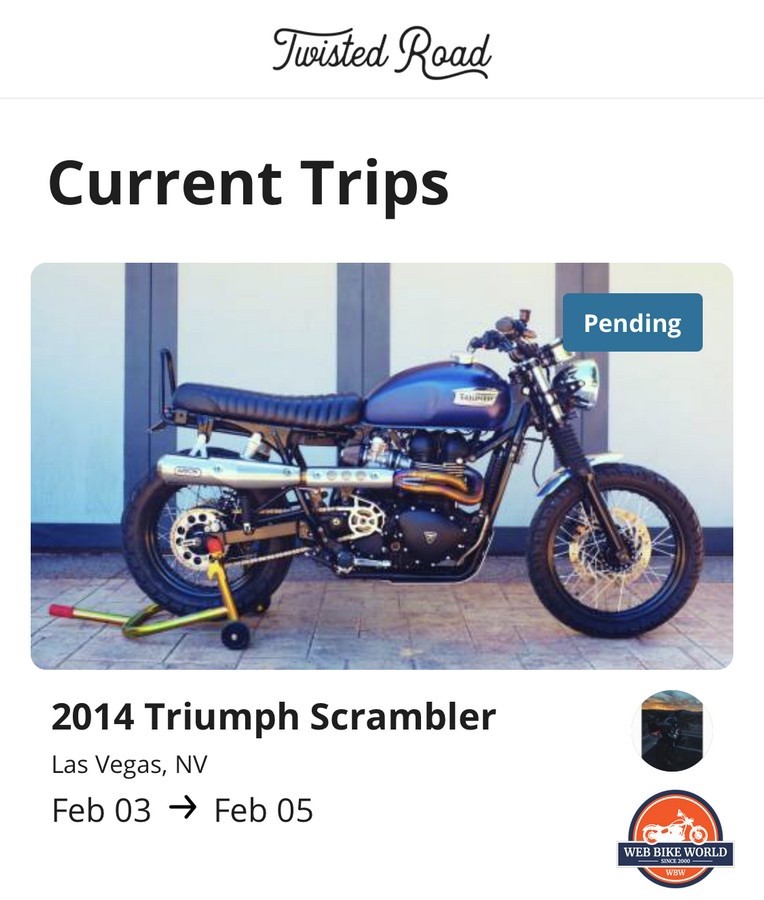
A Recap of the Atlas 3.0
I reviewed the Atlas 3.0 less than 9 months ago, putting it through an inappropriate barrage of testing like no other helmet I’ve worn before. Why did I choose to wear a street bike helmet while riding off-road for 4 days in the mountains of British Columbia?
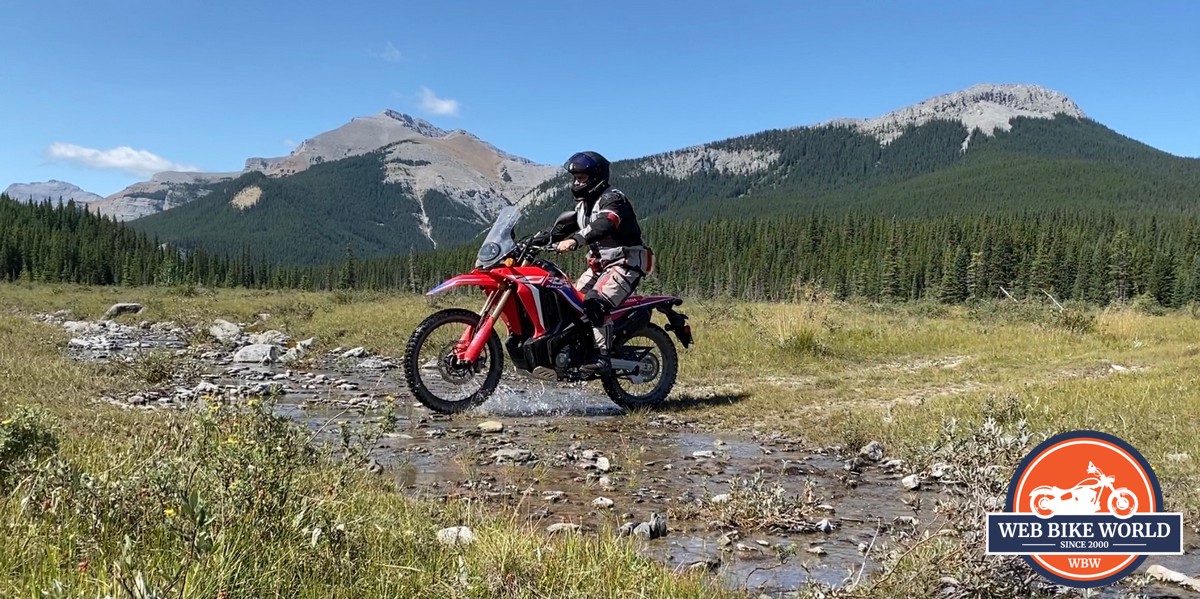
Easy: because I genuinely wondered if this aggressive-looking helmet was all style and no substance. I foolishly misjudged the Atlas 3.0 by equating its youthful appearance and wild-child styling with being a lower-quality piece of protective riding gear. Contributing to this was the fact that Ruroc has made updates to the Atlas design every year since its inception.
No other helmet manufacturer currently does this! Ruroc’s behavior plays a bit like indecisiveness or a lack of confidence in the product at first glance. At worst, it might suggest Ruroc was using paying customers to do their product testing instead of doing it themselves before selling their lids, and these helmets don’t come cheap—ranging from $475 to $595 US.
Long Story Short: I Was Wrong
After about 3000 km (almost 1900 miles) ridden, when the dust literally settled, I was shocked to find the Atlas 3.0 standing resolute with a stiff upper lip in the wake of my brutal and undeserving adventure riding treatment. In fact, it performed better off-road in some ways than one actual adventure helmet I’ve reviewed for far.
There’s also the fact that the Atlas 2.0 and 3.0 both scored 4 out of 5 stars when tested by SHARP, which confirms that Ruroc is taking crash protection seriously. Put simply: the plucky Atlas 3.0 can take a lickin’ and keep on tickin’.
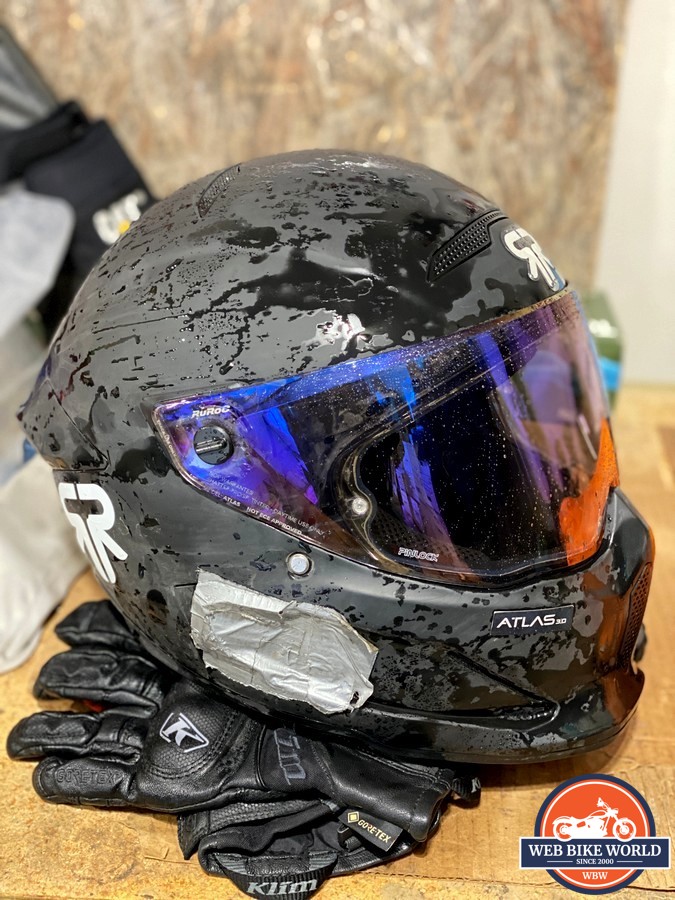
The Atlas 3.0 was dangerously close to being really competitive, and that’s why I was pumped about riding with the Atlas 4.0—which Ruroc claimed addressed most of my complaints about the 3.0.
The main question that needed to be answered: Had Ruroc taken the steps necessary with the 4.0 to beat the competition?
The Atlas 4.0 Launch Party
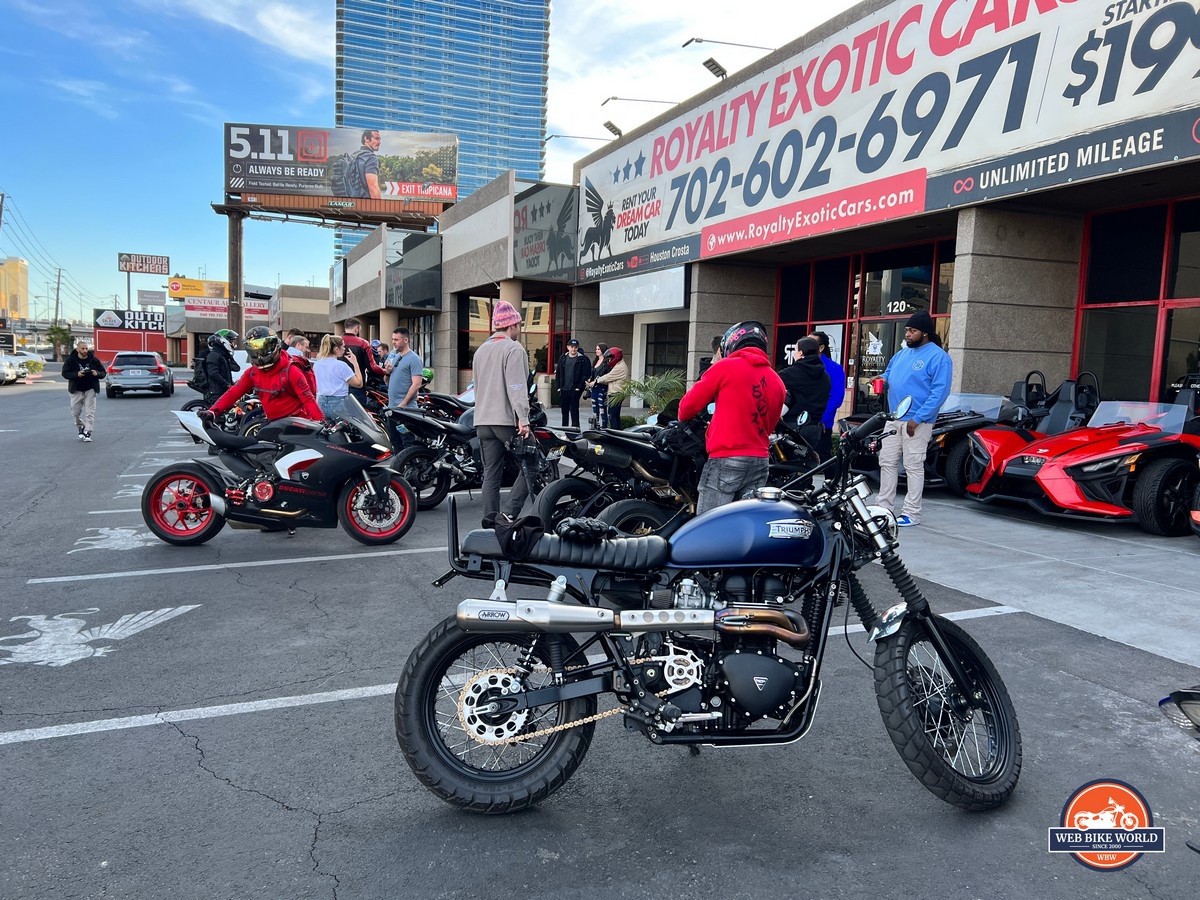
I arrived early at the Royalty Exotic Cars Rental shop in Vegas where the launch party was happening and met about 20 other excited people that were all half my age.
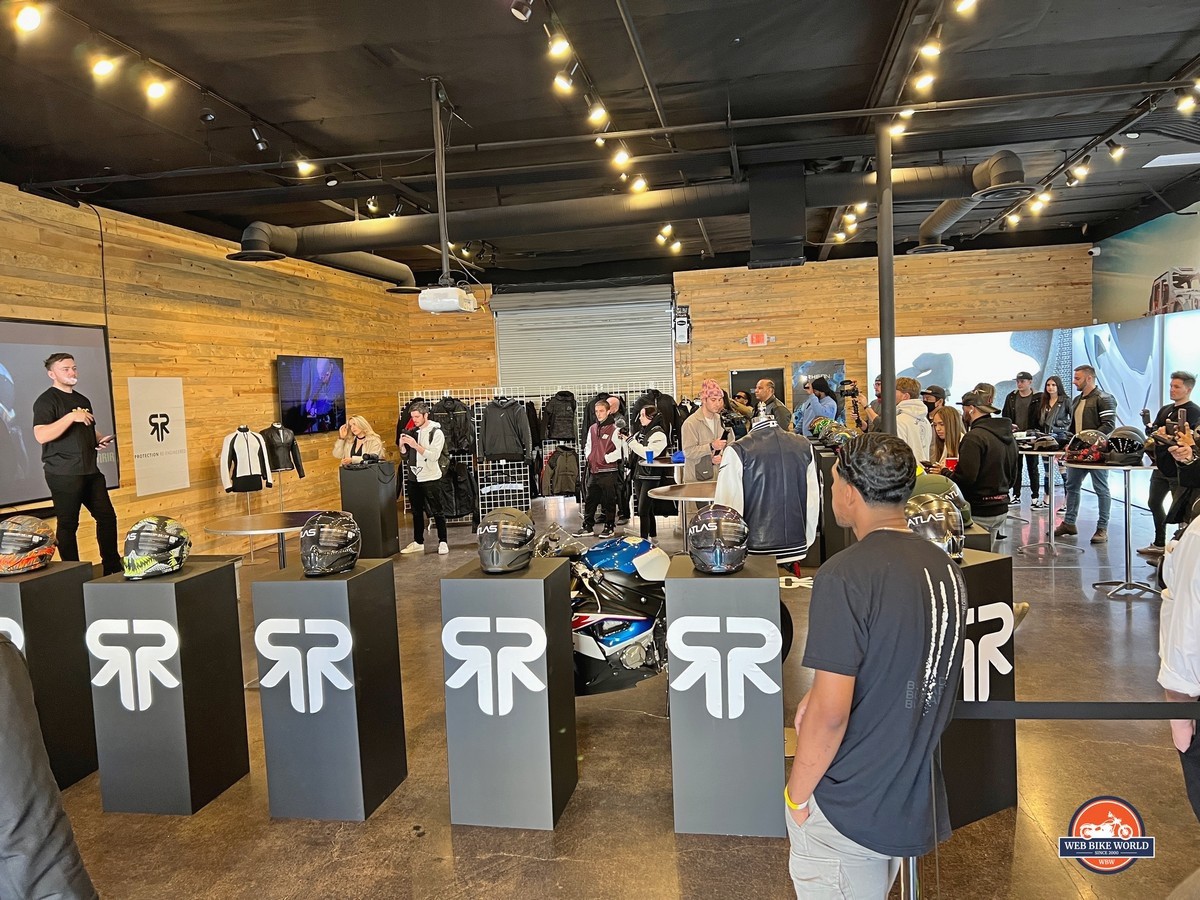
I’m sure they must have thought I was there to drop off one of my kids rather than take ownership of a truly stunning Atlas 4.0 in the Mercury paint scheme.
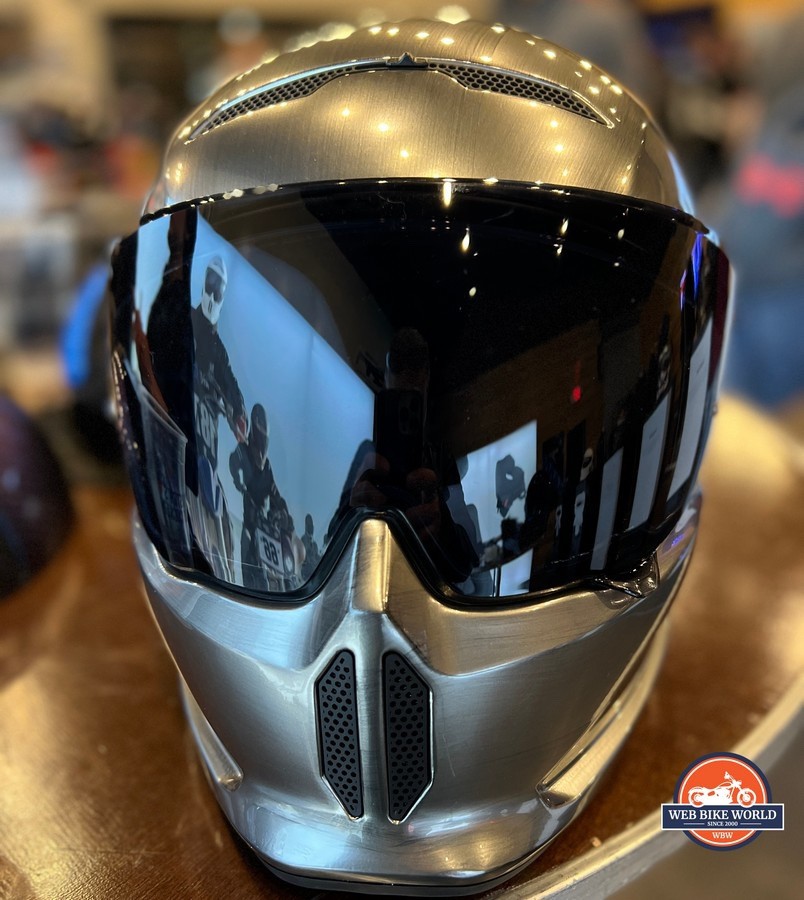
Something Extra for the Atlas 4.0: the Shockwave
In addition to the helmet, attendees were handed a $30 Pinlock 70 anti-fog shield—along with a $175 US Shockwave Bluetooth device that installs seamlessly in the helmet to quarterback a rider’s music, phone calls, and smartphone-initiated navigation.
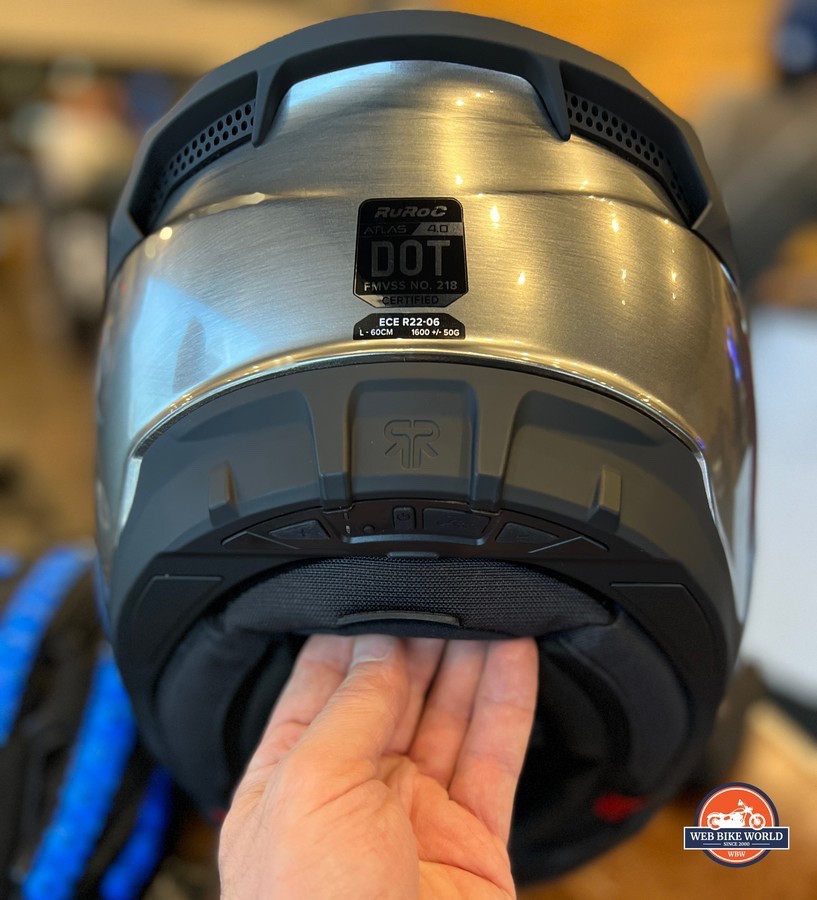
I’ve been wanting to test one of these units, so the Shockwave was a marvelous cherry on top of the carbon fiber Atlas 4.0 cake with a shell that looked like it had been made out of brushed aluminum.
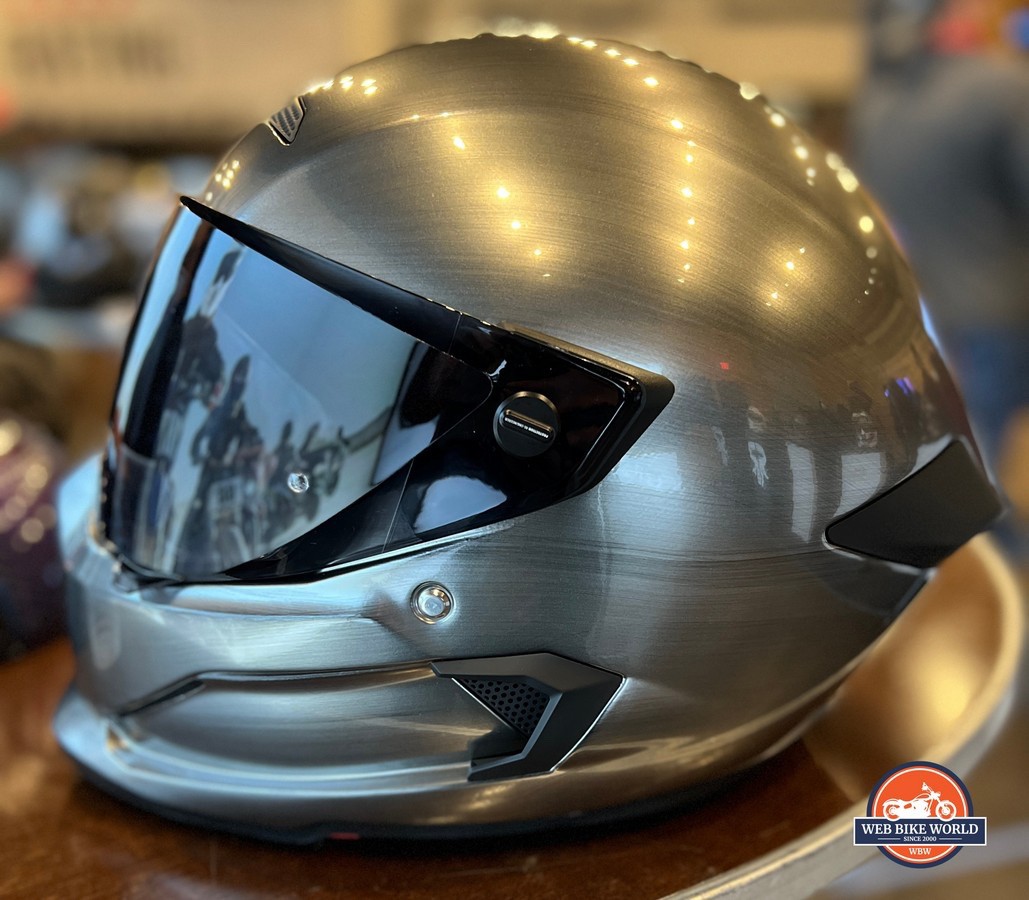
Installation of the Shockwave took slightly more effort on my part than it does with the Sena units I’m acquainted with, but I didn’t need any tooling to do it—which was a smart move by the Ruroc designers. I find that when I unplug the charging cable from the Shockwave, sometimes the unit tries to come out of the helmet as well. The device doesn’t give any clear indication that it’s locked into the helmet shell, which is frustrating.
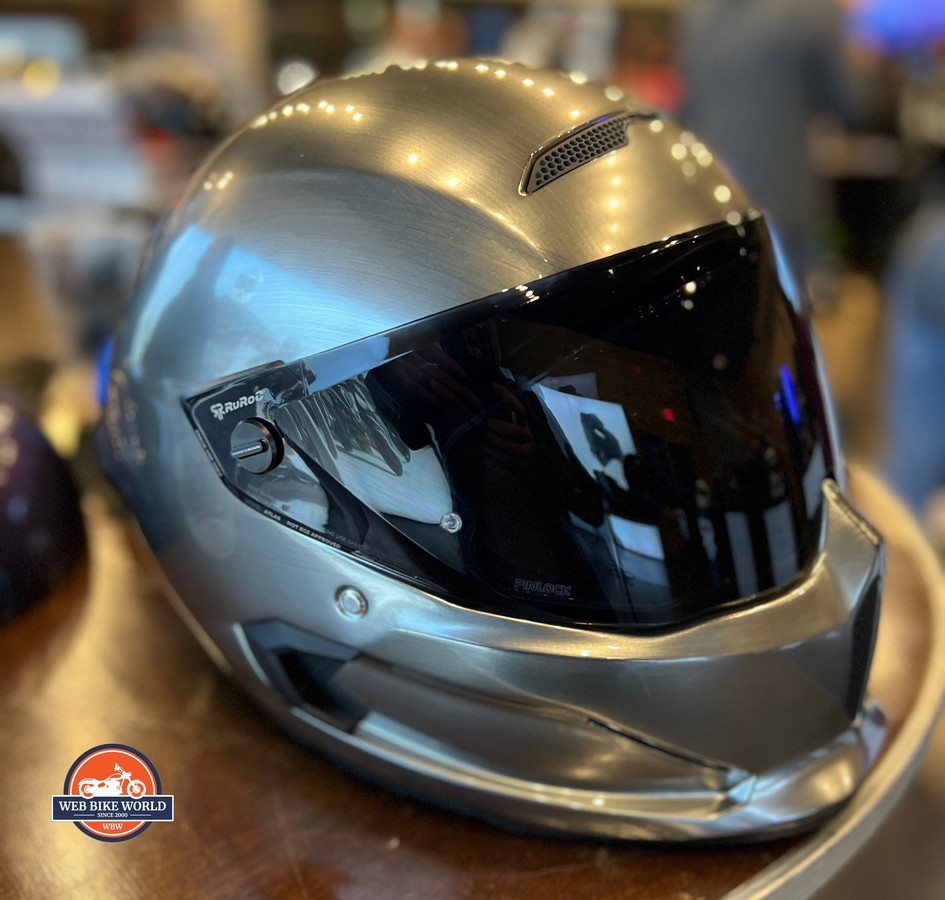
Also frustrating to me is how the velcro patch designed to hold the microphone in place came off the helmet’s interior when I repositioned the mic after installing it. I removed the velcro from the mic and tried getting it to stick to the inside of the chinbar again, but the bond is weak, and I doubt it’ll hold for very long. The Ruroc team told me to rough up the surface where I want it to go and then use a little crazy glue to stick it back on.
We’ll see how that goes later.
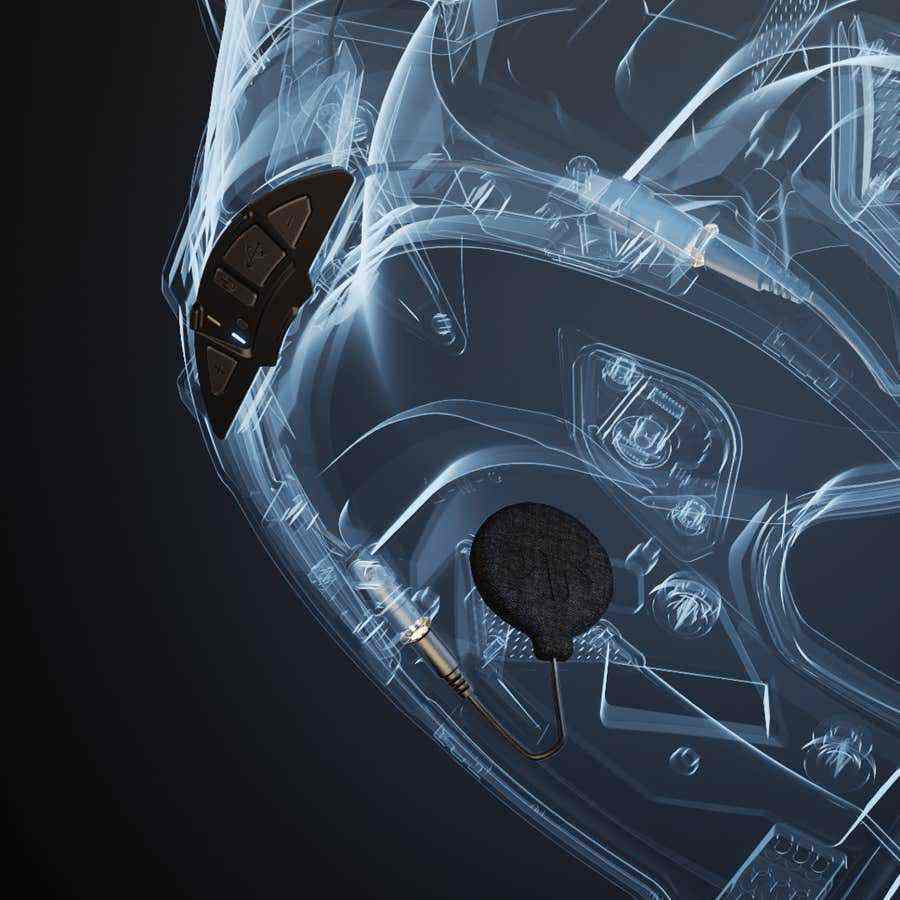 From Ruroc.
From Ruroc.I powered up the Shockwave and appreciated how it immediately went into phone pairing mode to easily bond with my iPhone 13 Pro Max.
My music library poured out of the speakers in stereo with good sound, but I don’t feel it’s quite on par with the best JBL or Harman Kardon hardware found in the top-level Sena and Cardo devices. It’s on the tinny-sounding side of things, comparatively speaking—although deep midrange and bass levels can easily get drowned out by wind noise while riding. I think all that’s needed is for the speakers to be moved closer to my ears to improve the perceived sound quality.
Still, the sound gets a thumbs up from me overall, and I would say the Shockwave speakers are very close to the Sena HD premium speakers level.
The Buttons
The Shockwave has volume up and down buttons on the main housing, but they’re impossible to use while riding. I’m guessing Ruroc figures everyone rides with their phone clamped in a QuadLock bar mount (or equivalent) and controls all their media from there?
Shockwave Intercom
The Shockwave has a Bluetooth intercom function according to the website, but I haven’t had the chance to test it yet. Neither have I checked battery life or taken any phone calls at this point, but I did use Google Maps successfully to navigate around Las Vegas.
VOIP Intercom
 Ruroc’s CEO Dan Rees (photo above) was in attendance at this event and explained to the group his plan to create a more sophisticated Bluetooth intercom system for the Atlas helmets was being abandoned in favor of using VOIP in combination with a phone app called Chain (which they’ve just released). Here’s a link to the page to download it for iPhone or Android devices.
Ruroc’s CEO Dan Rees (photo above) was in attendance at this event and explained to the group his plan to create a more sophisticated Bluetooth intercom system for the Atlas helmets was being abandoned in favor of using VOIP in combination with a phone app called Chain (which they’ve just released). Here’s a link to the page to download it for iPhone or Android devices.While VOIP has some clarity, range, and capacity advantages over Bluetooth and MESH intercom systems, I’m giving the move to Chain a thumbs down because it relies entirely too much on cellular data and network service to function. If you never ride outside urban areas and have an unlimited data plan for your phone it won’t be a problem, though.
For the record, MESH 2.0 is the best way to go, and I think Ruroc should develop that with their Shockwave devices going forward in addition to Chain. Honestly, though, I can’t fully understand why Chain is needed when people can instead use WhatsApp or Discord apps to do the same thing (by combining them with the Shockwave or any other in-helmet comms device).
Combine Chain with Sena/Cardo Units
Fortunately, Chain is really just another phone app that can be used with any Sena, Cardo, UClear, etc. device—not just the Shockwave unit—so you can have your VOIP cake and eat it with MESH or Bluetooth intercom, too. Simply switch to your desired communication format depending on who you’re riding with and where.
Let’s Ride! Testing the Ruroc Atlas 4.0 Helmet in the Real World
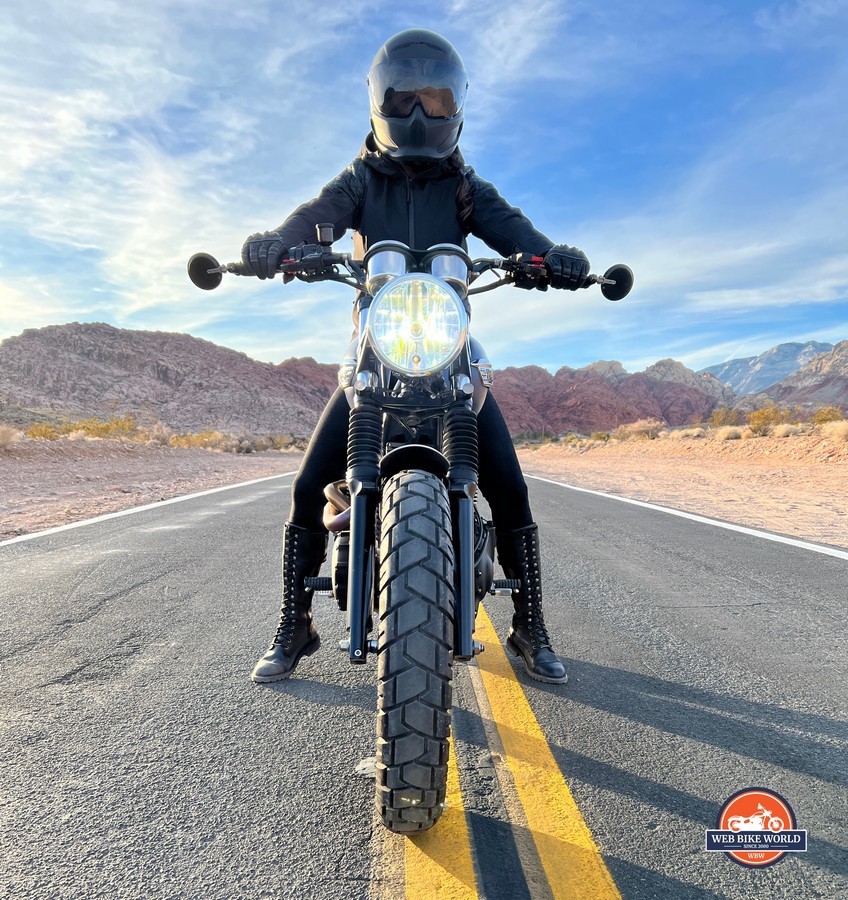
After everyone got a suitably-sized helmet on their heads, the crowd scattered to the four winds for 2 hours, during which everyone experienced the updated Atlas.
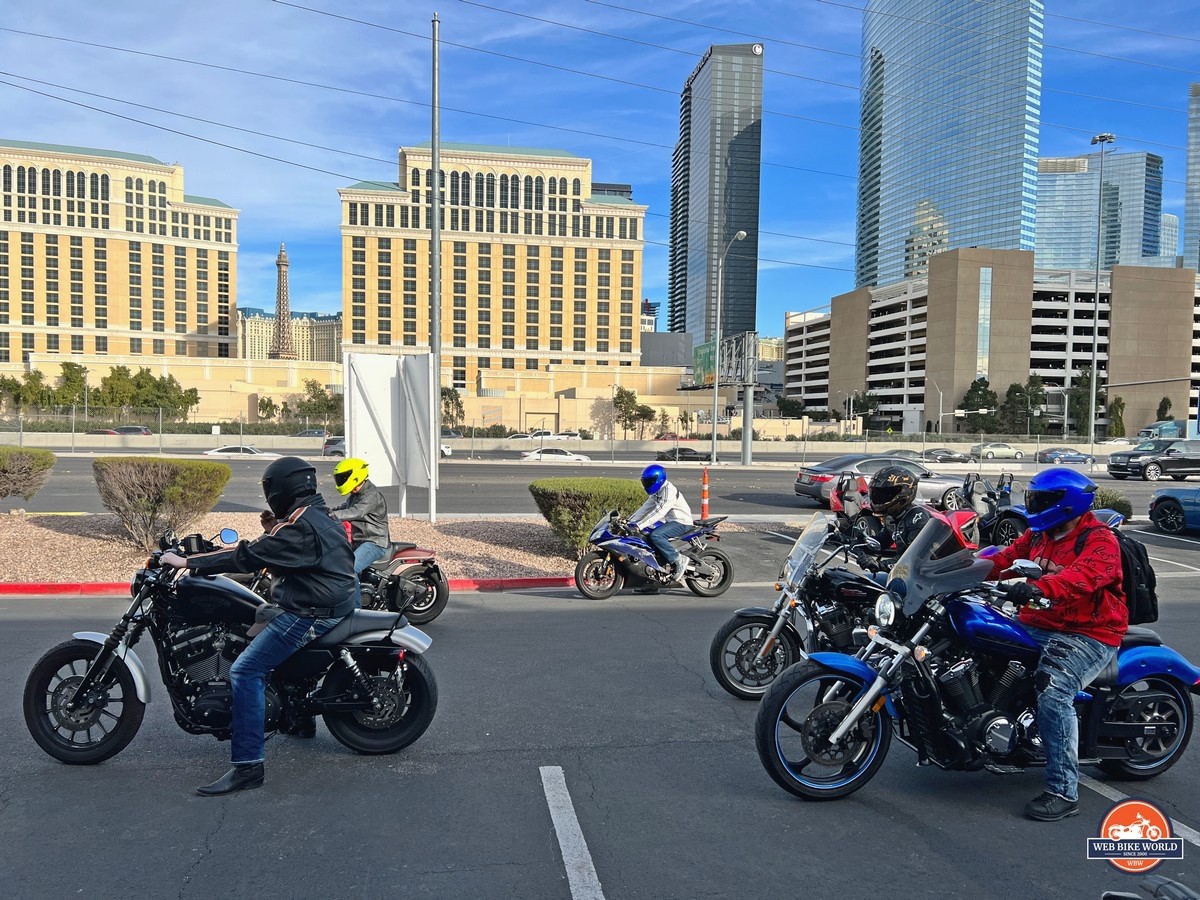
Ruroc Atlas 4.0 Helmet Noise
My biggest complaint about the Atlas 3.0 was how loud it was in turbulent air at highway speeds. I determined the cause to be the air vent scoops on either side of the chin bar, and I hoped Ruroc would get rid of these on the 4.0.
The 4.0 keeps the side vents but gets a completely redesigned comfort liner while losing one of the upper vents. The remaining vent on top of the helmet gets a new switch to control the airflow coming inside.
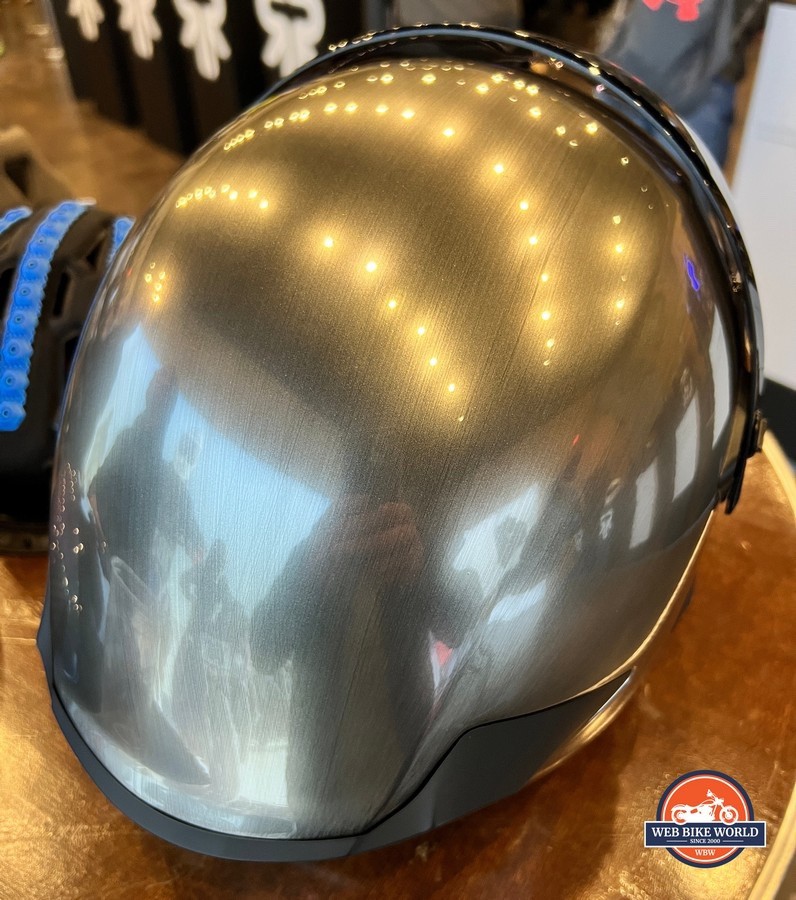
To my astonishment, these changes appear to have done the trick! I found the 4.0 significantly quieter than the 3.0 at highway speeds.
The new liner has sound-deadening material added to it, and if you don’t install Shockwave speakers in the pockets, there are foam pucks included to put in the cutouts—which can further reduce road and wind noise.
A Disclaimer Re: Helmet Noise on the Ruroc Atlas 4.0 Helmet
I only got to ride with the 4.0 on a naked bike (a 2014 Triumph Scrambler) and the 3.0 was noisiest in crosswinds on my KTM 790 Adventure. This was due to the shape of the windshield and fairings on the 790 that create a lot of turbulent oncoming air. Before I declare the 4.0 nearly as quiet as the quietest helmets I’ve worn, I need to ride my 790 with it first. Sadly, the Canadian winter weather has stopped me from accomplishing that at the time of this writing.
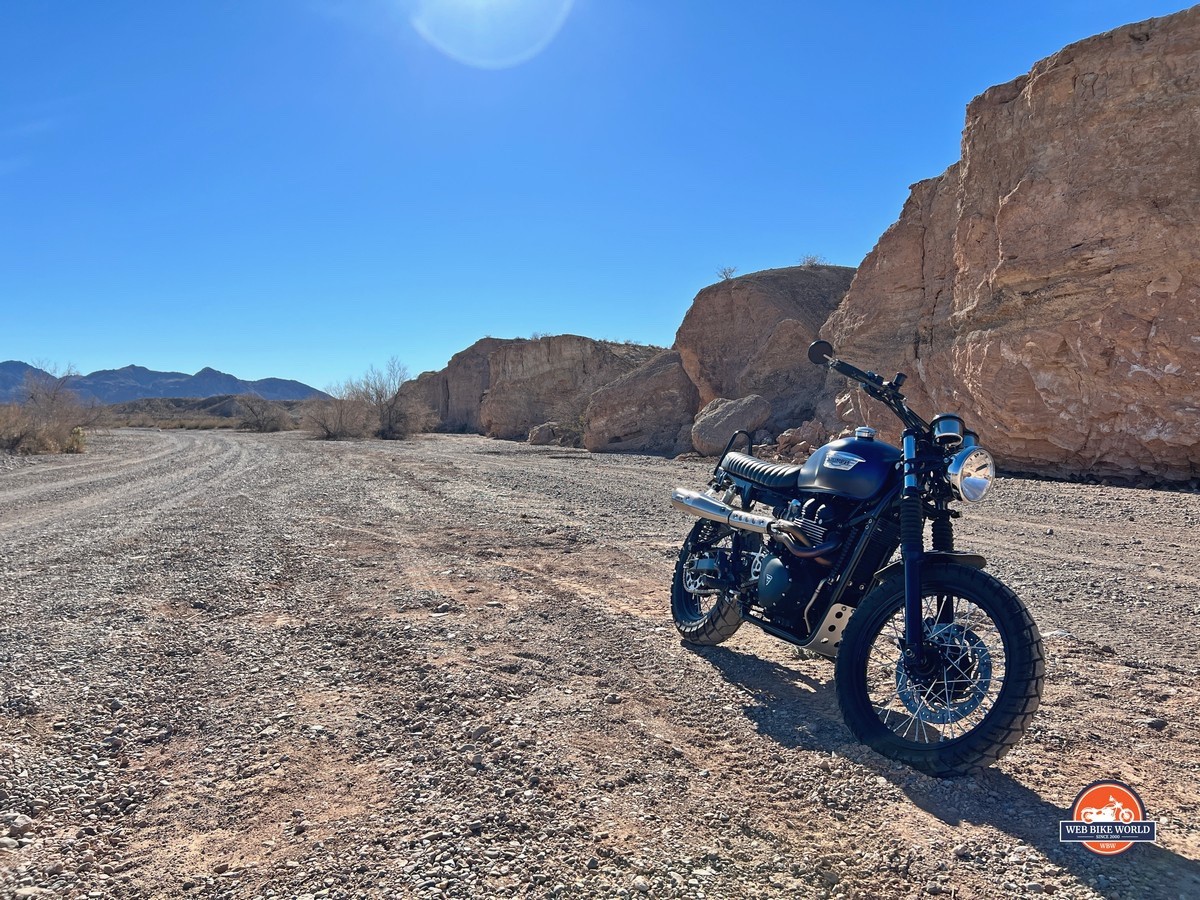
Still, I can say that riding the exact same rental bike in Las Vegas with both the 4.0 and the 3.0 confirms that the Ruroc team has done a terrific job in the noise-reduction department. I’m confident in saying people who ride naked bikes will find the 4.0 to be a quiet helmet.
How confident? While writing this review I was wearing my 4.0, listening to music at mid-volume playing on the Shockwave, and I couldn’t hear the phone ringing on my desk 2 feet away from me. I didn’t even have the visor closed.
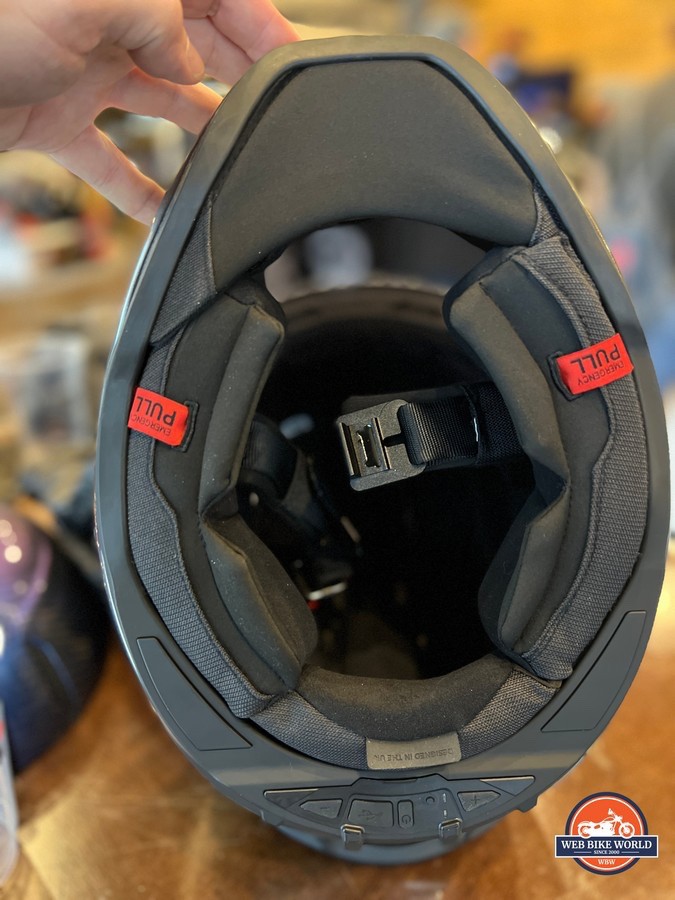 Atlas 4.0 neckroll comfort liner (above) versus Atlas (3.0 below).
Atlas 4.0 neckroll comfort liner (above) versus Atlas (3.0 below).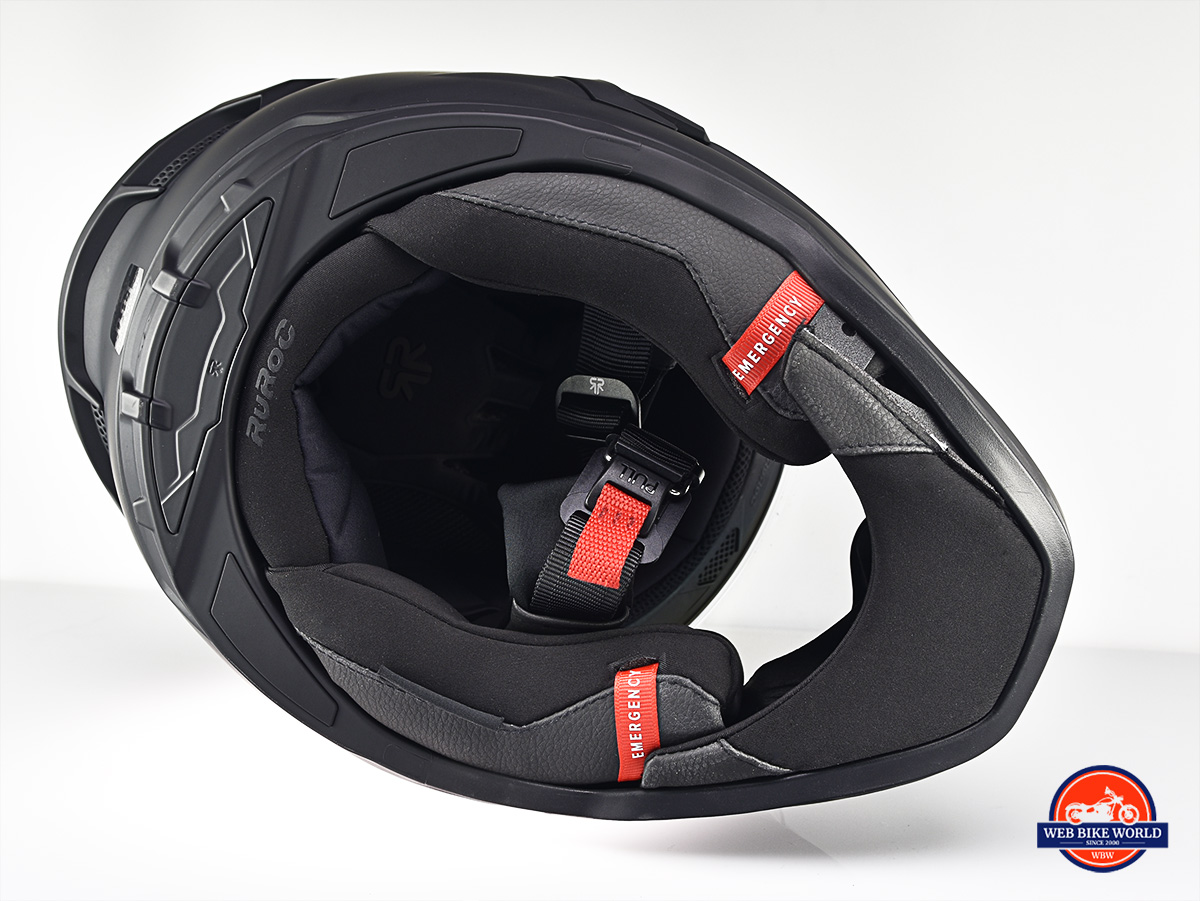
Fitment for the Ruroc Atlas 4.0 Helmet
The new comfort liner feels totally different than the one in the 3.0. It’s notably more supportive in the back at the base of my skull and has microsuede covering the cheek pads to provide a gentler caress.
I also notice my ears are housed in a more open cavity where nothing touches them—as opposed to in the 3.0, where the comfort liner was in constant contact.
I love these comfort liner changes—and even better news is that the new liner can also be installed in Atlas 3.0 helmets according to Ruroc.
Picking Your Ruroc Atlas 4.0 Helmet Size
The new liner in the 4.0 is thicker, and since my fat head of 23” (or 58.42cm) was a tight fit in the thinner 3.0 liner/Medium shell, I had to upsize to a Large-sized 4.0—despite the fact that the helmet label says it’s for heads 60cm and up. Oddly enough, the Large sized 4.0 fits me perfectly at the moment, but I wonder if it’ll loosen up after a few thousand miles.
Several other people at the event also had to move up a size, so if you’re ordering a 4.0, don’t rely on how the old 3.0 fit you. Instead, make sure to reference the new sizing chart on the website while buying.
Ruroc recently added two half sizes to their helmet lineup. If I were ordering a 4.0 today, the new ML size would accommodate my noggin perfectly (as you can see based on the sizing chart below)—but at the launch event, ML wasn’t an option for me.
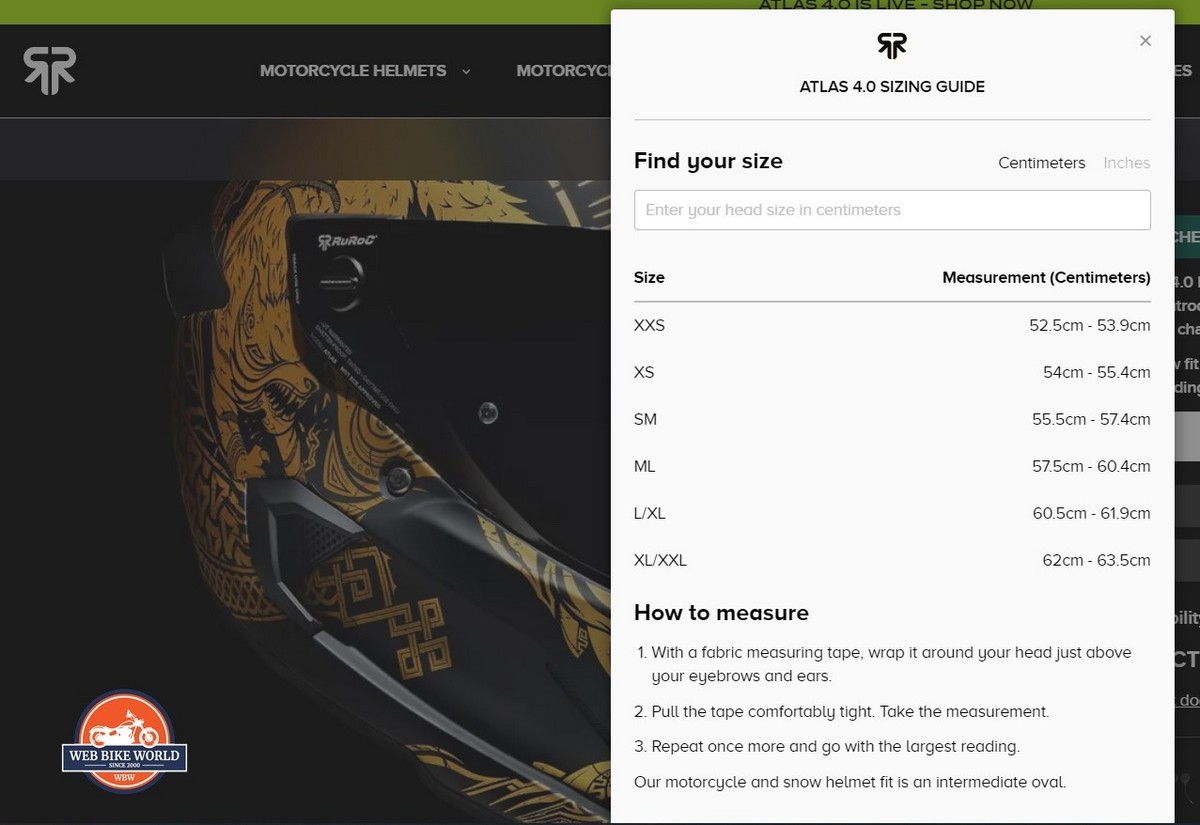
Yes, this sounds a bit confusing—but again, I recommend simply following the Ruroc sizing chart instead of trying to overthink things.
Vents & Airflow for the Ruroc Atlas 4.0 Helmet
Opening or closing the upper vent using the newly-added switch lever on the 4.0 can be a little challenging while wearing fairly thick gloves, due to how small the arm is. Without my gloves on, I find it stiff to move and hard for bare fingers to actuate compared to most other helmet vent switches, but that also suggests the switch will last a long time.
To my disappointment, Ruroc left the slider for actuating the lower (chin bar) vent on the inside, making it all but impossible to manipulate while on the fly, thanks to the chin skirt getting in the way.
Here’s hoping the Atlas 5.0 will feature an exterior switch on the chin bar vent.
Staying Frosty
Airflow itself is above average in the 4.0, and I was very comfortable at highway speeds in the 65° F (18° C) Las Vegas air. In fact, I was even tempted to close the upper vent at times to stay warmer.
I noticed airflow wrapping around the sides of my head almost all the way to the back, which signals an improvement over my 3.0’s venting. However, I wonder if the fact my 3.0 is a Medium versus a Large might have affected the performance. The vents in my 3.0 might also be partially obstructed by dust or dirt from riding off-road so much.
Improved Safety in the Ruroc Atlas 4.0 Helmet’s New Comfort Liner
Ruroc decided to install chains of rubbery material along the top of the comfort liner, which they say acts as both a slip layer and energy-absorbing material.
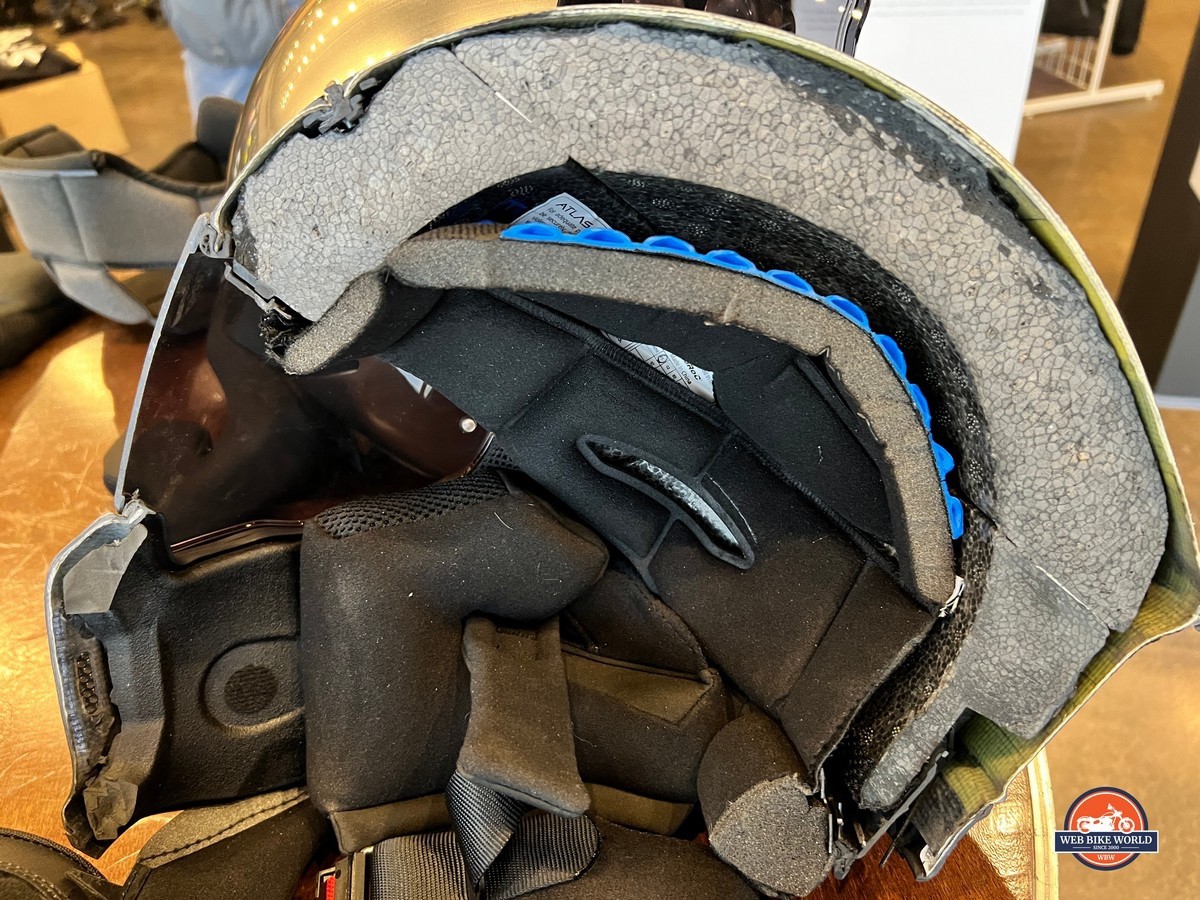
This stuff is called Rheon, and Ruroc claims it helps protect the head from linear forces in a crash (as well as cutting down rotational energy by 8 to 10%). So it performs like a less-effective MIPS liner, but it’s also like having a bit of D30 crash armor against your head.
I’ve never personally noticed another company doing this before, and if it actually works as described, the Rheon is a valuable addition to the helmet. It’s like installing springs on top of a sponge in my mind, and I question how effective it would be in a linear impact—but Ruroc says it works, and I can’t disprove the claim.
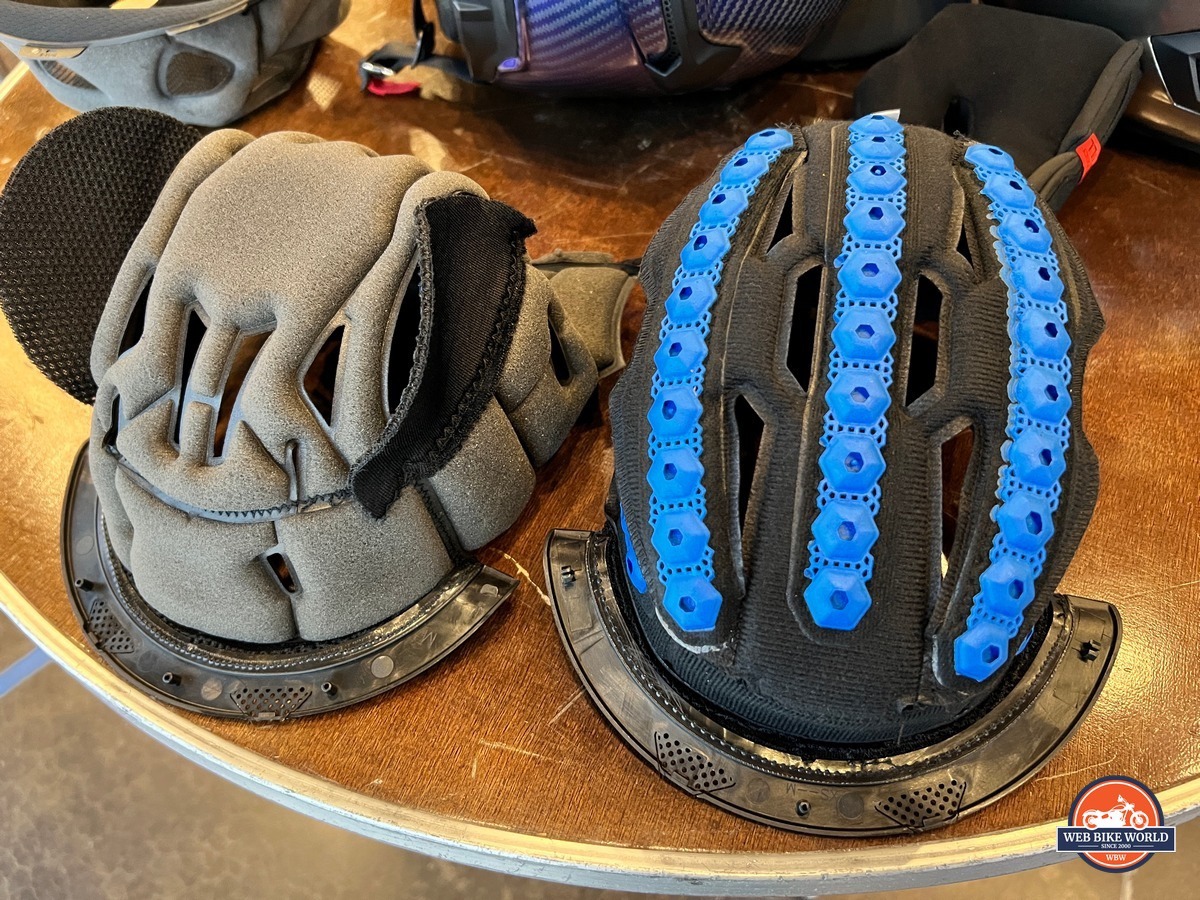
The Atlas 3.0 comfort liner (left), with the Atlas 4.0 (right).
ECE 22.06 Homologation
Adding Rheon to the helmet along with changes to the shell design enabled the Atlas 4.0 to exceed the brand new ECE 22.06 standard by 20% or more, according to Ruroc. So this is a good helmet to have on your head in a crash.
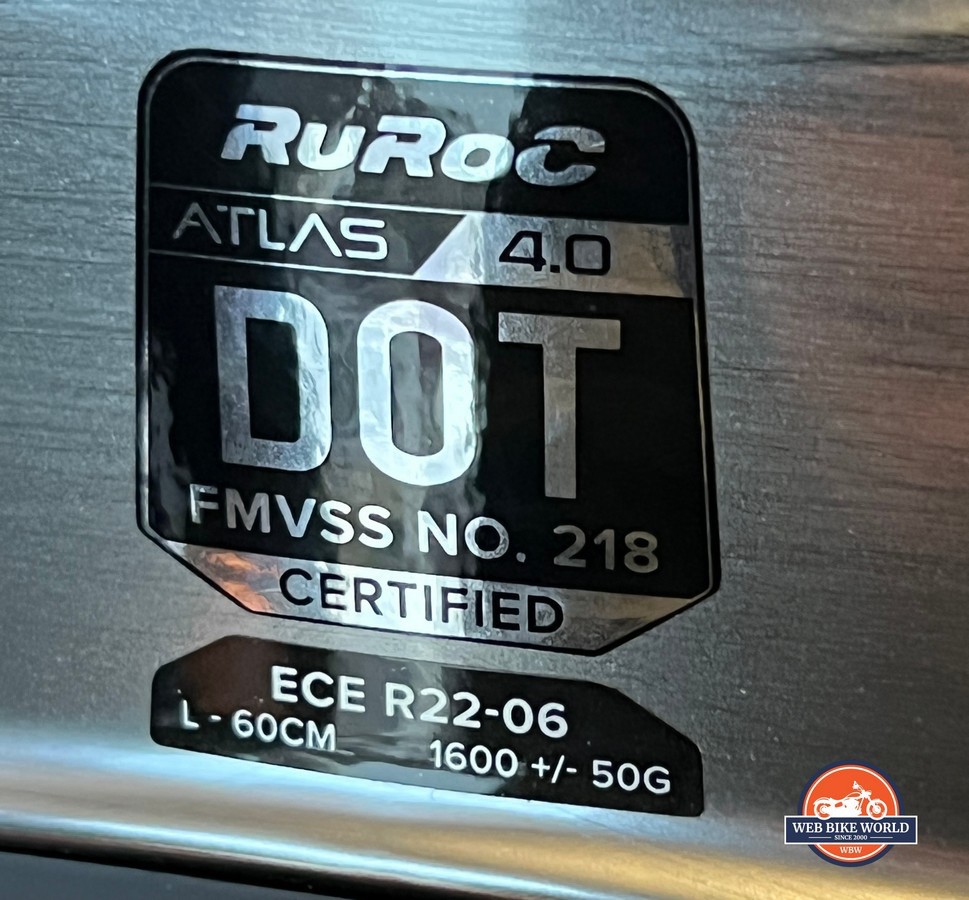
At the time of this writing, there are only about a handful of other helmets that have achieved 22.06, so the 4.0 is in good company—with the likes of the new Arai Quantic, HJC RPHA-1, Schuberth C5, and Shoei NXR2 (European RF-1400), to name a few.
The Visor on the Ruroc Atlas 4.0 Helmet
Ruroc didn‘t make any changes to the visor, mainly because it didn’t need improvement. The quick disconnect system remains easy to use and seals out the wind (and presumably water) perfectly on the 4.0—just as it did on the 3.0 before it.
For those who previously purchased visors for their earlier Atlas helmets, it should be comforting to know you can install them on the new 4.0 as well.
I swapped a tinted visor for the clear one that came with the helmet to better block the bright Nevada sun but found myself wearing sunglasses behind the tinted visor to feel more comfortable. I guess that means it’s dark, but not too dark?
The Weight of the Ruroc Atlas 4.0 Helmet
With the Shockwave unit installed, I measured my size Large Atlas 4.0 at 3.98lbs (1805g).
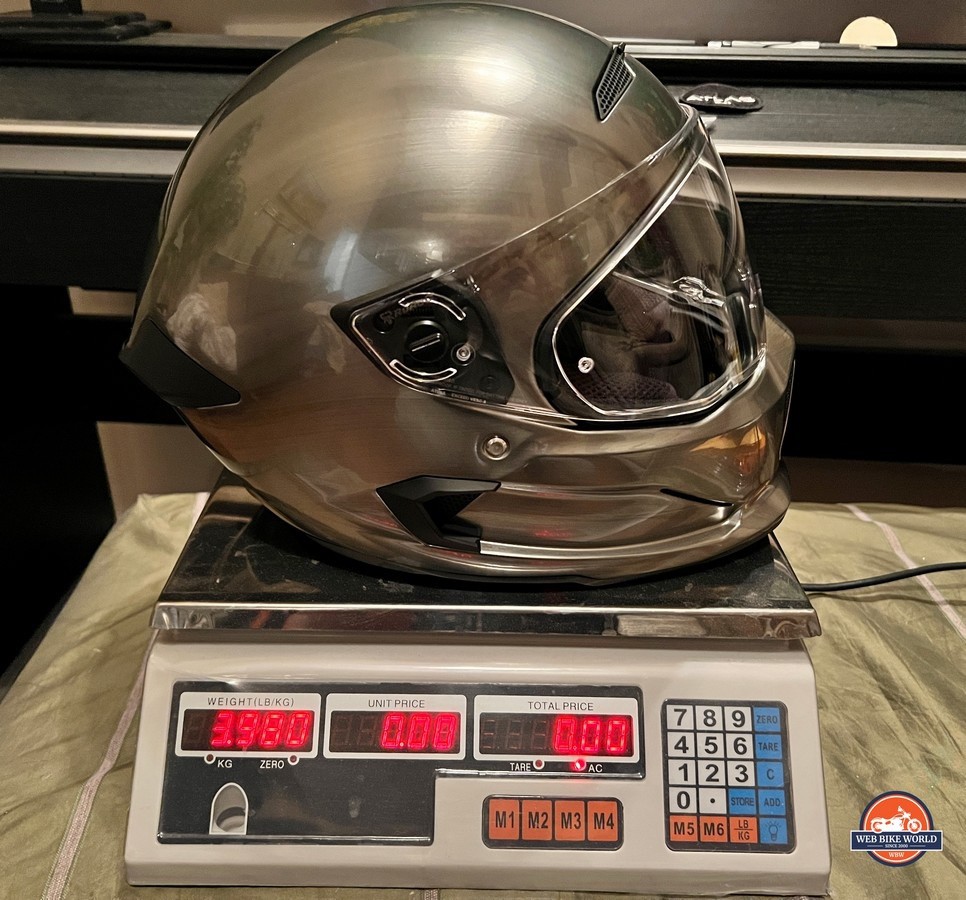
Ruroc claims it should be 3.64lbs or 1600 +/- 50g without the Shockwave, and that appears to be accurate.
Final(?) Verdict on the Ruroc Atlas 4.0 Helmet
I can’t yet describe the complete long-term picture of what the Atlas 4.0 offers to prospective buyers, but my initial impression is that it’s a good quality helmet.
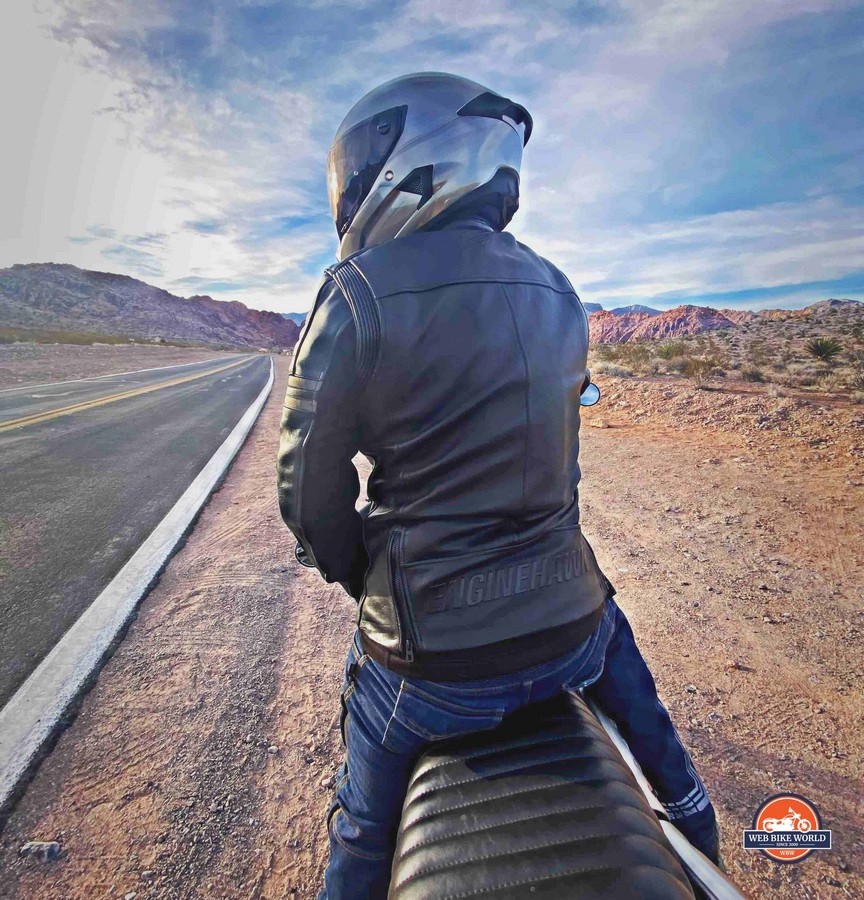 Photo by @hdbikerbabe.
Photo by @hdbikerbabe.The 4.0 has enough going for it at this point to be considered a serious competitor on the market when it comes to performance and protection. The styling is right off the charts, to the point where I struggle to believe such a fancy helmet also protects as well as it does.
Do the Dollars Make Sense?
The cool factor has always been there in spades for Ruroc, but now the improved safety and comfort help justify the Atlas 4.0’s higher asking price compared to less expensive carbon fiber helmets from manufacturers like Scorpion. I questioned the value-per-dollar of the 3.0 but would more readily plunk down my hard-earned bucks to acquire a 4.0, despite the price ranging from $495 US to $595 for the fancier paint schemes.
Add another $30 for the Pinlock, $70 for two more visors (you get two for $70), and the Mercury model I have will cost $695 US, plus $27 more for shipping. That’s getting up into the range where you can buy handmade helmets from Arai and Shoei. Several Schuberth, AGV, and other very popular high-end helmets are in this range too.
The Lower-Priced Competition
The best comparable bargain would be the Scorpion EXO-ST1400 Antrim Carbon, which includes an integrated sun visor and a Pinlock for $450 US. That’s a $175 US difference in price without bringing shipping costs into the equation. Both helmets weigh about the same and have carbon fiber shells.
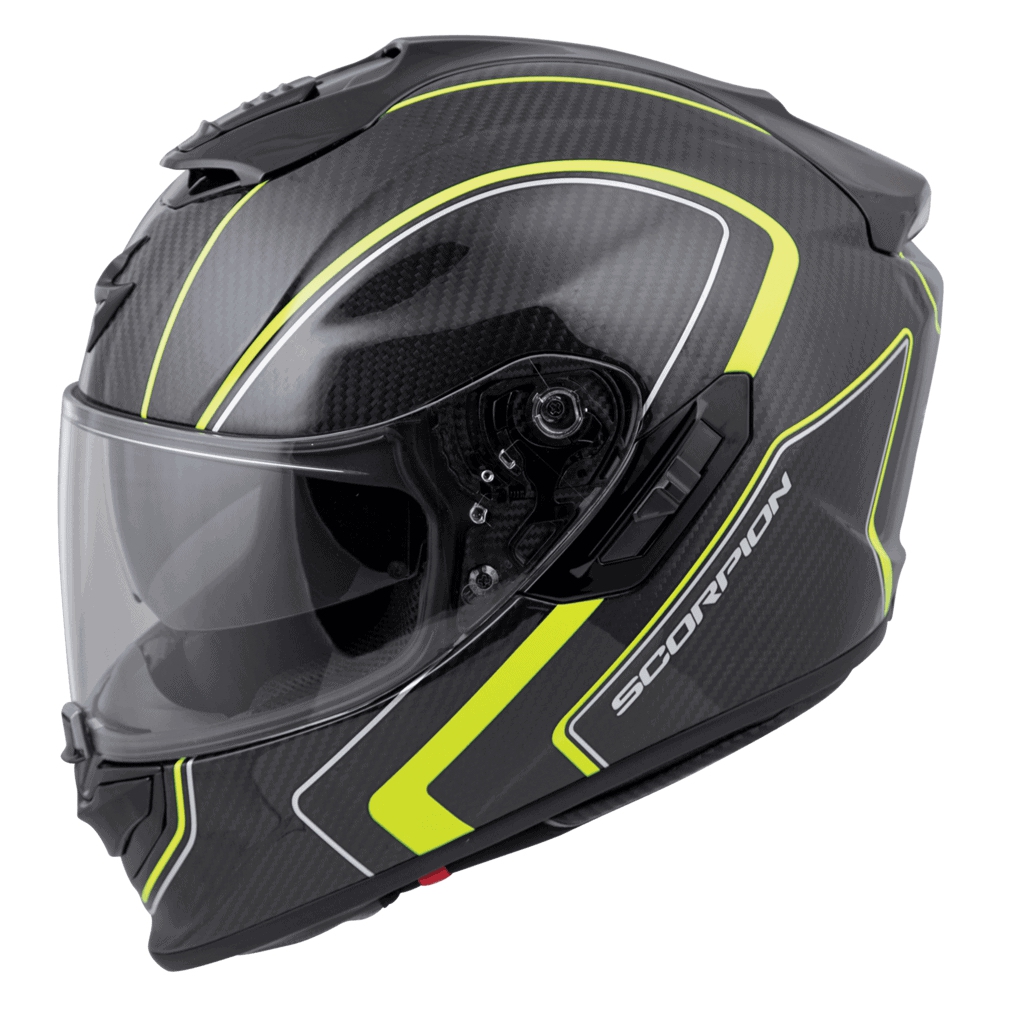 From Scorpion.
From Scorpion.The ST1400 is only ECE 22.05 approved currently, but likely will get 22.06 approval soon enough. It also got a 4 out of 5 stars score from SHARP.
Let’s face it: the thing that sets the Atlas 4.0 apart from all competitors is its appearance.
A Vanity or a Necessity?
If you’re on a tighter budget, the Scorpion is the helmet you should buy between these two. You’ll feel very happy with your terrific ST1400—but if the wow factor of Ruroc’s styling cries out to you and you have the cash to spare, I think you’ll feel like you got your money’s worth paying extra for the Mercury (or other premium-finish Atlas 4.0 helmets).
It’s unlikely anyone will ever stop to ask questions about your ST1400 helmet—while conversely, the 18 different colorways available with the Ruroc 4.0 threaten to stop traffic at times, what with all the rubbernecking that will happen around you when you wear one.
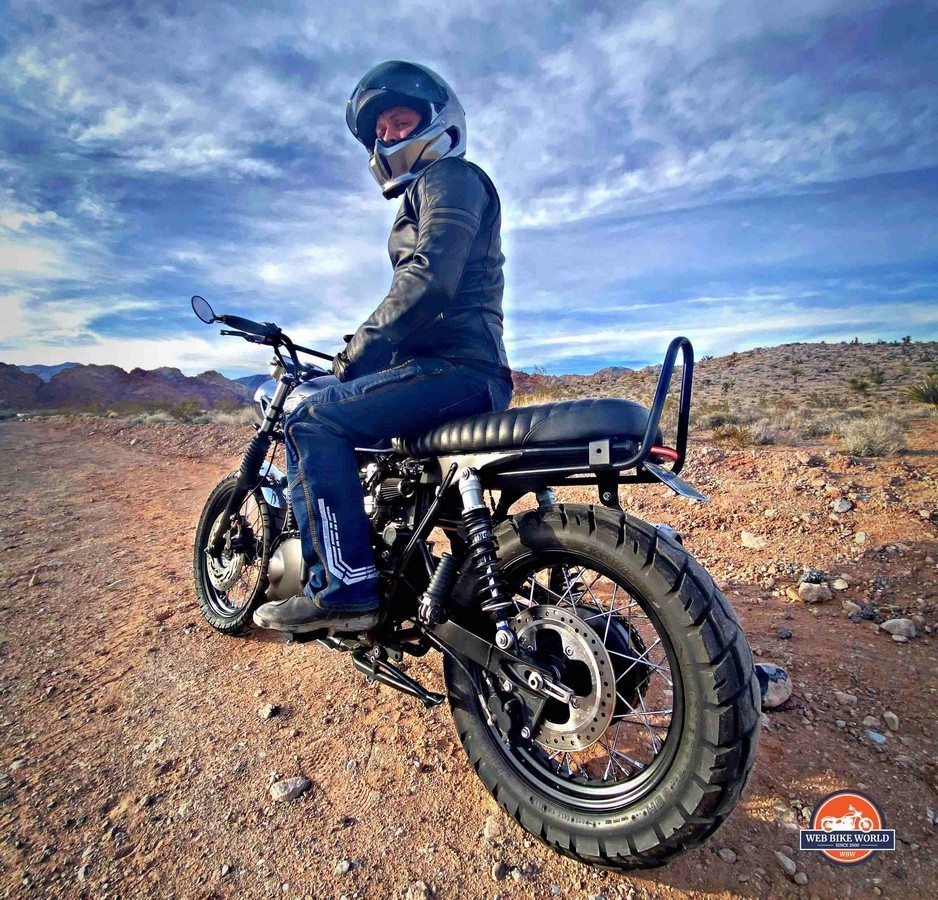 Photo by @hdbikerbabe.
Photo by @hdbikerbabe.It’s the closest thing to having a custom-painted helmet from the factory on your head. So if you consider what a custom paint job for your helmet would cost, the 4.0 is actually a bargain.
Ruroc Upped Their Game
The Atlas 4.0’s build quality and sum total of features should now concern all competitors who previously dismissed this helmet as insignificant. I would place it near the AGV and Shark level but still below Schuberth, Shoei, and Arai.
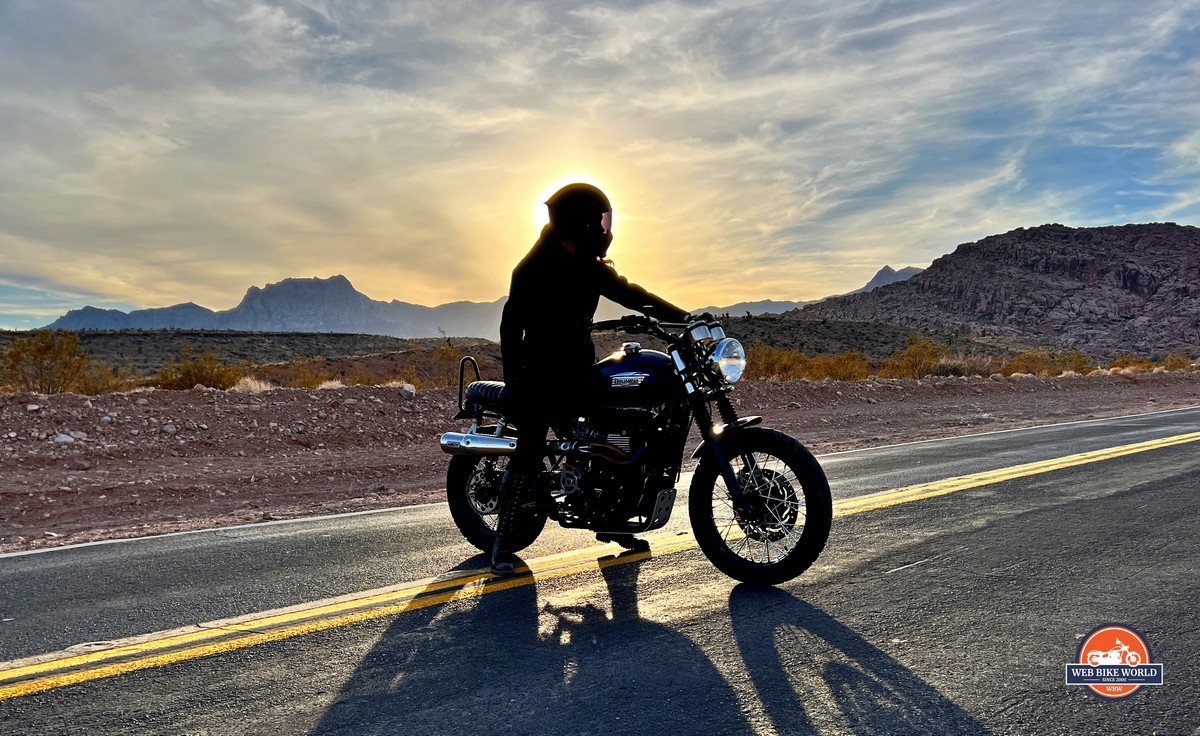
The Atlas 4.0 still has some things to improve upon, but the list is getting shorter with each new generation Ruroc produces. My main pieces of constructive criticism involve the following:
- Supply issues and the fact you can’t go to a store to try these helmets on
- Velcro strips for installing the Shockwave microphone and speakers don’t always stay in place
- The tall chin bar, which obscures my vision while retrieving things out of my jacket pockets
- The interior chin bar vent switch, which should be moved to the exterior
- The side vents on the 4.0 might still create excessive road noise on certain motorcycles
- The price is still notably higher than some similar carbon fiber helmets on the market
- It’s heavier than some other carbon fiber helmets (AGV K6, X-Lite X-803 Ultra Carbon, HJC RPHA Carbon)
But, 75% of these cons are highly subjective—or things that I might find are no longer an issue with the 4.0 during further testing.
Beyond those few things, I’m struggling to find anything to complain about. Those who insist on throwing shade at the Ruroc brand from here will look more and more foolish—because, in my opinion, Ruroc is the real deal now.
– Jim
Specs
- Manufacturer: Atlas Helmet for Ruroc
- Price when tested: $595 US plus an additional $275 in extras and $27 shipping
- Made in: China
- Sizes: (XXS) 20.67″ – 21.22″ (XS) 21.26″ – 21.81″ (SM) 21.85″ – 22.6″ (ML) 22.64″ – 23.78″ (L/XL) 23.82″ – 24.37″ (XL/XXL) 24.41″ – 25″
- Colors: 18 different colorways
- Safety Designations: ECE 22-06 and DOT FMVSS 218
- Review Date: Feb 23, 2022
Important Links
- Where to Buy: Ruroc only
The post [REVIEW] Ruroc Gets Serious With the Atlas 4.0 appeared first on webBikeWorld.
Continue reading...


